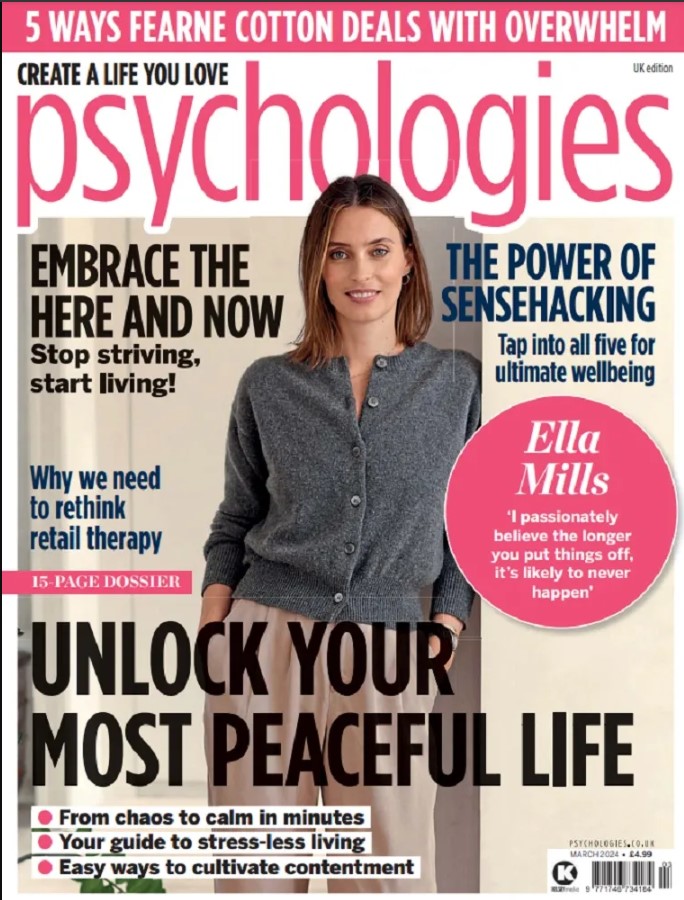Intrusive negative thinking? Here’s how to calm those negative, recurring thoughts.
As a tool for creativity and problem solving, thinking is a wonderful ability indeed. But when the table turns and our thinking takes a negative turn, or persistent thought patterns become destructive rumination, our happiness and well-being take a nosedive.

Listen now, download for later, or read the full transcript:
How to escape the tyranny of anxious thoughts.
Our ability to think is a double–edged sword. As a tool for creativity and problem solving, thinking is a wonderful ability indeed. But when the table turns and our thinking takes a negative turn, or persistent thought patterns become destructive rumination, our happiness and well-being take a nosedive.
The saving grace is somewhat paradoxical. We can neutralise the negative thinking courtesy of our ability to think about our thoughts. Once we develop the skill of thinking about thinking, we can bring our rumination under control, and we can get a bit better at managing where to place our attention.
We place our attention on specific thoughts every day – thinking about what we might have for lunch perhaps – and then make a decision related to that thought – and then act on it. Second nature. Problem solved.
When our sleep gets disturbed and we wake up with a troublesome or upsetting thought, we’re not quite so well prepared. But we can be, if we practice our response.
There are a couple of things we can do to tackle the problem.
Our thoughts flow out from us. If you like, it’s a bit like watching something floating down a river. You notice it, you can see it floating on by and you can watch it as it disappears downstream.
We can do the same with our thoughts. We can identify a thought, and let it pass and flow away down our thought-stream. We have the ability to notice and process our thoughts in a useful way.
Here’s a useful analogy:
I don’t know if you’ve ever been to a Yo Sushi! restaurant. The design of all the restaurants is the same. The kitchen is central to the restaurant. And it’s surrounded by countertops and tables that face in the way so that you can observe the chefs as they are preparing the food. Between you and the kitchen area there’s a continuous conveyor belt that goes all the way around the restaurant. On the conveyor belt, there are little plastic pots of very tempting food with transparent lids, so you can see exactly what’s in them. And they continuously flow past you.
You have the option, if you like what you see, to pick a pot or two off the conveyor and put them on the table in front of you, or simply leave them on the trolley to continue on the way around. They may, or may not, come back again. The same thing may pass you a few minutes later, and again, and again. We can begin to use this way of visualising things to create a metaphor for the way we make decisions as to what to do with our intrusive thoughts.
We have a choice to take them off the conveyor belt or to leave them on and let them go round, and even if they come round again, we have the choice to leave them on. And so it goes. We can become attuned to our thinking.
In the middle of the night…
If in the darkness of the night we wake up and something’s troubling us, rather than focusing straight in on it – taking off the conveyor belt, if you like, we can be conscious of what’s happening. We can notice that we are doing that ‘thinking’ thing again and ask ourselves the question – ‘Do I want to do that thinking thing or not? Do I want to focus on that particular thought again? Or do I want to leave it on the trolley and let it go around?’ And if it comes back, you don’t have to grapple with it, not now, not at this exact moment. You can let it go around again, and you become skilled eventually at noticing when you’re thinking, and you become skilled at developing the ability to decide whether you’re going to deal with that thought right now – or later.
If it’s intrusive, you can always switch the light on, and make a note to yourself – I’m going to deal with that troubling thing in the morning or at the very next opportunity, but I’m not going to let it keep me awake. It’s interesting, isn’t it, our ability to think about thinking. We can actually think about thinking about thinking and it can all get a bit meta. But the more skilled we get at it about noticing ‘Oh, I’m doing that thinking thing again’, the more we can become practiced in the skill of diminishing the amount of rumination. We learn to successfully manage what used to seem sometimes like a constant stream of troubling and recurrent internal rambling.
When the stress is too much to be logical.
Once the stress hormones kick in, it can be difficult to wrangle our thoughts successfully. So, we need then to tackle the stress first – to get back into rest & digest mode. Intentional breathing is one way to do that. Breathing is particularly useful. Breathing and redirecting your thinking to some other point or to some other part of your body to focus the attention away from the thought can be a really powerful intervention which becomes second nature with practice..
Intentional breathing.
Is just that. Intentionally breathing in a rhythmic way so as to become calm and clear. What’s been good for Buddhist monks for millennia might just be good for us. This technique is also used by special forces in high intensity operations – they simply wouldn’t use it if it didn’t work. Trust me.
3,5,7 breathing.
OK here we go. Nothing difficult about this. Find a place where you won’t be interrupted for a while, where you can sit or lie comfortably. Turn off phones, ringers and notifications. Move around until you feel your posture is as straight as it can be whilst staying relaxed. Untangle any crossed arms or ankles, and if you can let your arms lie by your side rather than resting on your body.
Take a few slow breaths and with each breath increase the volume of air you take in. But don’t overdo it. This won’t work if you end up feeling overinflated.
Next, get used to holding the in-breath for a while – a few seconds – without tightening up at the same time. It’s not like the breath holding you do when you are curing hiccups. Stay loose. Once you’ve got the hang of that, you can start the 3, 5 7 routine.
Here’s how it goes. Breathe in and fill lungs and belly within the count of three – it’s quite a powerful in-breath. Hold for 5 whilst staying as loose as you can. Then breathe out slowly for a count of 7. It’s the out-breath that creates the reset. And the last instruction is this. Whilst you breathe out, touch the back of your upper front teeth with the tip of your tongue. This help moderate and smooth out the out-breath.
If you can learn to do this a few times in succession, you can use it to calm your-self pretty much anywhere.
If you incorporate it into your daily routine – even when you don’t feel acutely stressed, it will help reset your stress levels overall. A few rounds before sleep – or t help you to get to sleep, maybe. Then again for a few minutes before you leap out of bed in the morning.
Eventually you’ll find yourself using it instinctively when you feel the whoosh of the stress response kicking in.
Doing this, and combining it with the skill of observing our thought stream and directing it as we choose are two of the most powerful things we can do to keep ourselves clear and calm.

Pete Mosley PCC
Coach/Speaker/Writer
I work with quiet, thoughtful and purpose-driven individuals to help build confidence in both life and work, for example by supporting them to find a voice, speak up, pitch or talk in public without feeling intimidated by louder voices. As a reflective person myself, I'm drawn towards working with others who find the cut and thrust of everyday life to be a challenge. I also help business owners work out how to promote themselves and build an audience for their work. I'm a graduate of the acclaimed Barefoot Postgraduate Certificate in Business & Personal Coaching, and I now teach for Barefoot. My book - The Art of Shouting Quietly - a guide to self-promotion for introverts and other quiet souls – has sold in 25 countries around the world. I'm very experienced - I have 15 years of track record as a mentor in the Creative Industries prior to training as a coach in 2008. Please don't hesitate to get in touch - I'm always happy to talk with you about coaching/mentoring on the phone - with no obligation.



